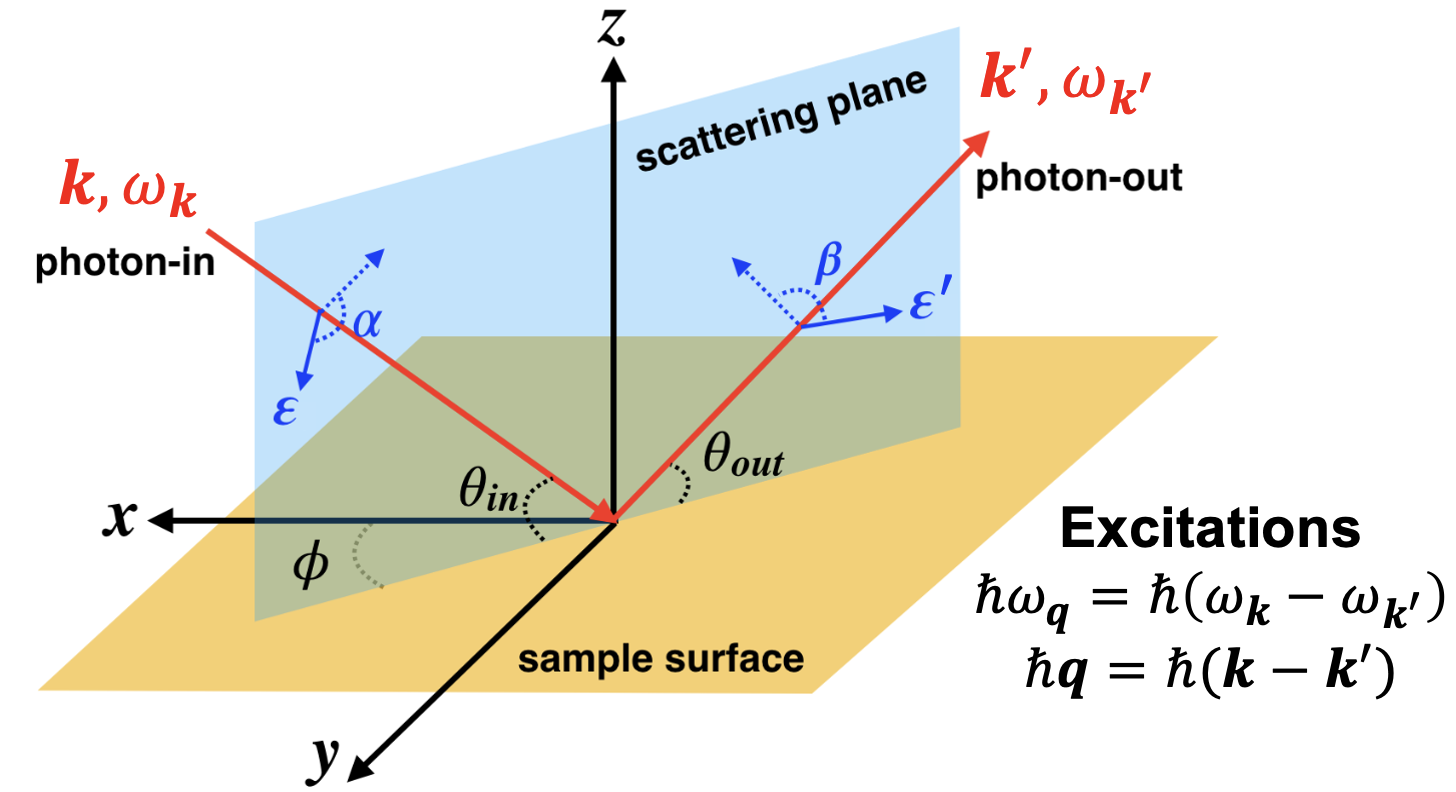Introductory material#
EDRIXS is an open-source toolkit for performing exact diagonalization RIXS calculations. See Ref. [1] for the original paper, Ref. [2] for the docs, and Ref. [3] for the source code.
Geometry and notation#
Consider a typical setup for RIXS.

Here, RIXS intensity is described by [4]
where \(\mathcal{Z}(T) = \sum_i e^{- E_i/(k_\mathrm{B}T)}\) is the partition function. The main part of the physics is in the matrix elements \(M_{fi}\), which can be illustrated as

and calculated via
Hamiltonian#
Adopting the second quantization formalism, Hamiltonians in EDRIXS involve:
A two fermion term that accounts for:
Crystal field. For example \(10 D_q\), which is the splitting between the \(e_g\) and \(t_{2g}\) orbitals in octahedral symmetry.
Spin orbit coupling, \(\lambda_i\), \(\lambda_n\), \(\lambda_c\)
Hopping (in cases where this is part of the model) \(V_{eg}\), \(V_{t2g}\)
Charge-transfer energy \(\Delta\)
The four fermion term that accounts for:
Intra-valence-shell Coulomb interactions e.g. Slater integrals \(F^0_{dd,i}\), \(F^2_{dd,i}\), and \(F^4_{dd,i}\) for a \(d\) shell.
Core-valence Coulomb interactions e.g. Slater integrals \(G^1_{dp}\) and \(G^3_{dp}\) for \(L\)-edge RIXS.